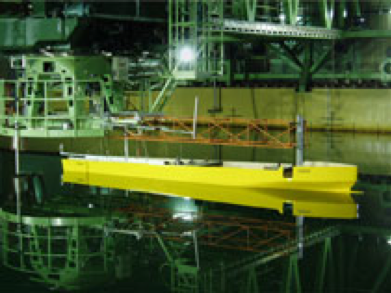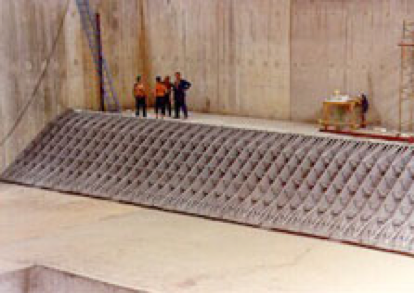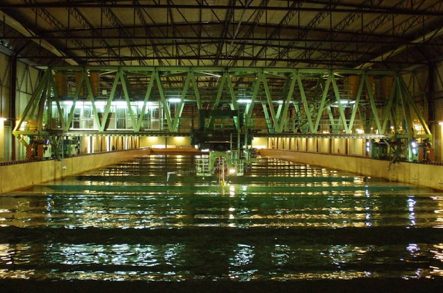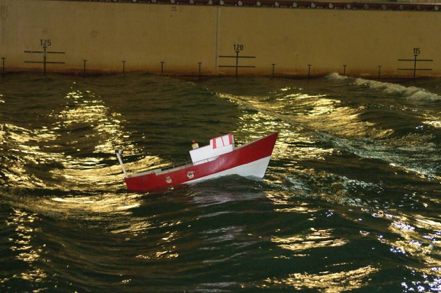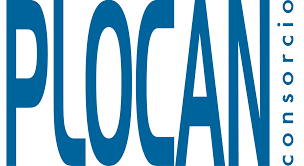NODO3 - CEHIPAR - Ship Dynamics Laboratory
The Ship Dynamics laboratory provides the latest technology for wave generation and test instruments and devices for measuring the movements of ships and other floating structures in the presence of waves and wind.
Main characteristics:
- Length: 150 m
- Width: 30 m
- Depth: 5 m + sectional pit (10 x 10 m) of 5 m additional depth, thus achieving total depth of 10 m.
- Wave generator: Multiflap snake-effect generator. Its total width is 30 m and it has 60 articulated rigid flaps, with hinges located 2 m from the bottom of the channel. The segments or flaps that set up the wave generator are hydraulically operated independently. A wave absorber beach is mounted on the opposite side. It can generate longitudinal and oblique regular waves of lengths between 1 and 15 m and heights up to 0.9 m. Oblique waves ±45º, long and short-crested irregular waves of significant heights up to 0.4 m, standard and arbitrary spectra, capacity to reproduce group spectra and episodic waves.
- Wind generator: Capacity of simulating the aerodynamic loads on the vessel or the marine structure by means of fans installed on the models.
- P.M.C. (Computerized Planar Motion Carriage): The CPMC is a set of moving structures above the surface of the tank. It consists of a principal carriage and sub-carriages. Its basic objective is high-precision reproduction of all possible horizontal movements of a ship or any floating structure at sea. The principal carriage can be moved uniformly and horizontally along the tank. The three sub-carriages hang below the principle one and are mechanically independent and permit transverse, incremental and rotational motions that are superposed onto the movement of the principle carriage.
The transversal sub-carriage can vary the vertical position of the incremental and rotational sub-carriages, thus adjusting the conditions required for the tests.
The CPMC self-developed software automatically controls the movements of the carriages, their positioning, the position of the model, acquisition of data, evaluation of the test runs, etc.
